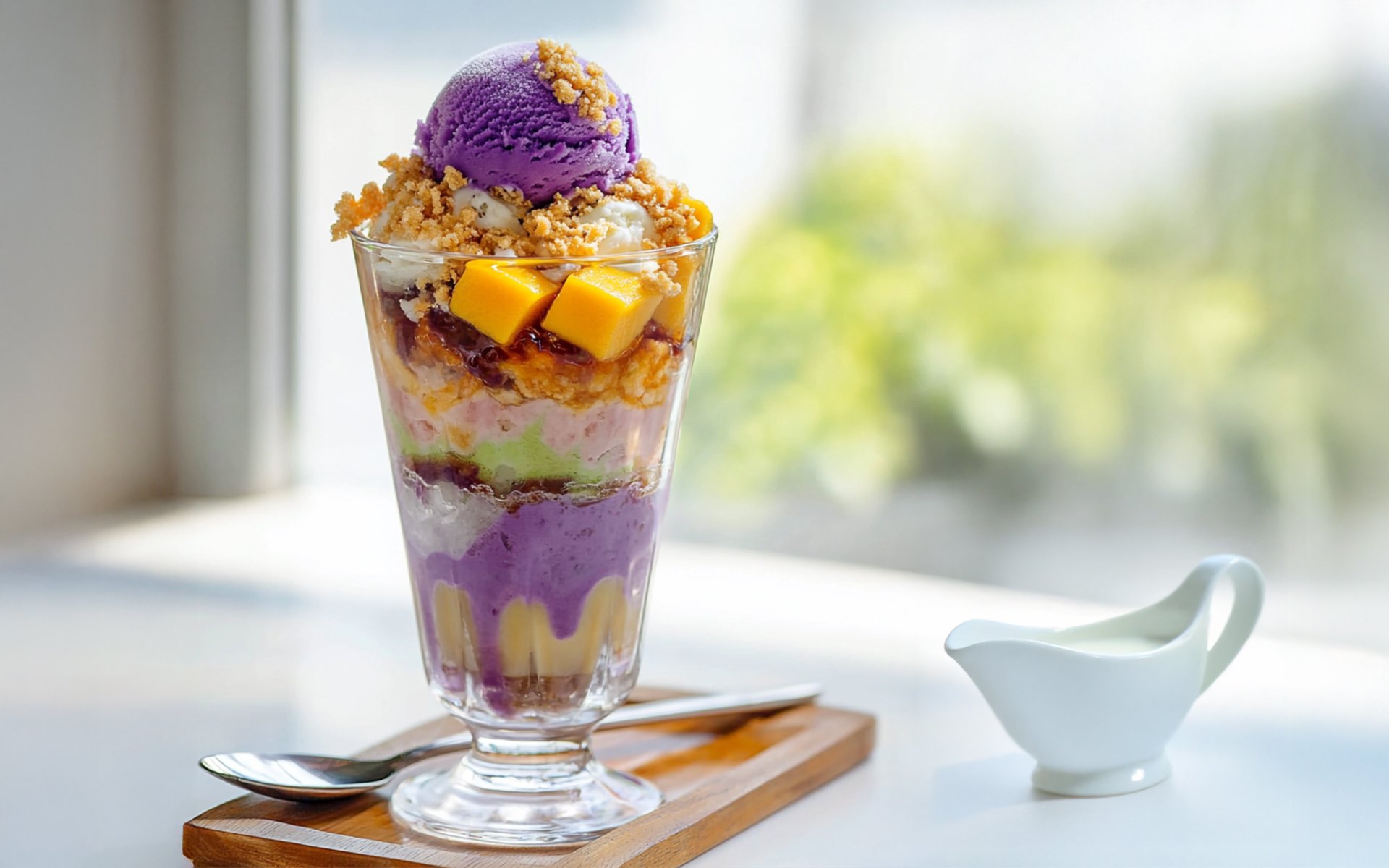Halo-halo

What Is Halo-halo?
Halo-halo (or Haluhalo) means mix-mix in Filipino, and the name says it all. This colorful dessert is made by combining shaved ice, evaporated milk, and a variety of sweet toppings like fruits, beans, jellies, syrups, and ice creamall layered in a tall glass or bowl.
The Essential Ingredients
A basic Halo-halo includes crushed ice, sweetened condensed or evaporated milk, and sugar syrups. It is then topped with local ingredients like sweet mung beans, coconut strips, sugar palm fruit, jackfruit, corn, saba bananas, gelatin, tapioca pearls, purple yam, and even scoops of ice cream. The clear serving containers highlight the colorful ingredients and vibrant textures.
Japanese Roots and American Influence
Although Halo-halo is distinctly Filipino today, its origins trace back to Japanese immigrants who introduced Kakigori (Japanese shaved ice desserts) in the 1920s1930s. Their version, known as Mong-ya, featured mung beans and sweet milk over ice.
Later, during the American colonial period, the establishment of the Insular Ice Plant in 1902 made ice widely available. This marked the expansion of shaved ice treats across the Philippines. As Japanese influence waned, Filipinos adapted and expanded Mong-ya into what is now called Halo-haloreflecting an even broader mix of ingredients.
Local Interpretations
Across the Philippines, different regions put their own twist on the dessert:
- Wintermelon Halo-halo from Aling Talengs (Laguna) includes red and white beans, purple yam, coconut meat, and sweet coconut shreds.
- Buko Halo-halo from Batangas uses only three toppings: coconut strips, toasted pinipig (crispy rice flakes), and Leche flan.
- Purple yam (ube), either candied or as ice cream, is also a trendy and beautiful topping nationwide.
More Than Just a Dessert
Halo-halo is a symbol of the Philippines multicultural identitymerging local and foreign influences. It has grown from a humble treat to a cultural icon, frequently featured in media and food blogs. With infinite combinations of ingredients, each Halo-halo tells a different story and continues to evolve with every generation.


